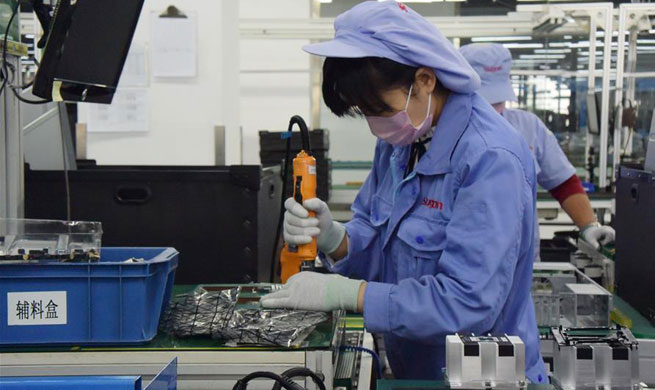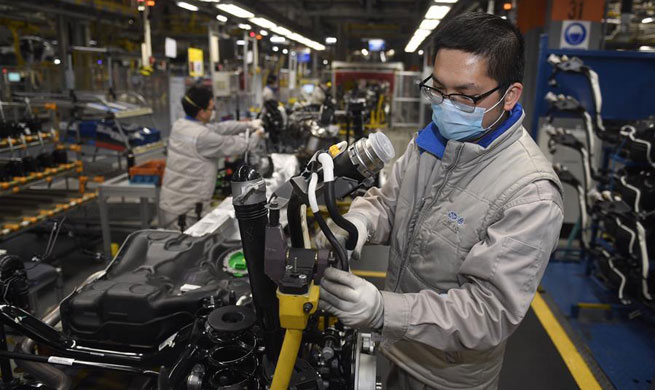CHICAGO, Feb. 19 (Xinhua) -- Researchers at the University of Michigan (UM) have developed a list of best practices for lithium-ion battery lifetime extension after plowing through scores of academic papers and manufacturers' user manuals, as well as information on customer-support websites.
Many of the recommended practices posted on UM's website on Monday are related to the three main variables that impact battery health: temperature, state of charge and current.
Here are some general guidelines from the UM researchers to maximize lithium-ion battery lifetime, along with a few specific recommendations from manufacturers.
Avoid temperature extremes, both high and low, when using or storing lithium-ion batteries.
For electric vehicles, nearly all manufacturers include warnings about high temperatures in their owner manuals. Some of them advise parking in the shade and keeping the vehicle plugged in during hot weather, thereby allowing the battery cooling system to run as needed. Plugging in the vehicle is also recommended in cold weather, so the battery heating system can run on grid power.
Minimize the amount of time the battery spends at either 100-percent or zero-percent charge, as both extremely high and low "states of charge" (SoC) stress batteries. Consider using a partial charge that restores the battery to 80-percent SoC, instead of 100 percent. If that's not possible, then unplug the device as soon as it reaches 100 percent.
Using "fast chargers" is convenient but will degrade a lithium-ion battery more quickly than standard charging. For cellphones and laptops, lowering screen brightness, turning off location services and quitting high-power-use applications can help slow the discharge rate.
Avoid use or storage of lithium-ion batteries in high-moisture environments, and avoid mechanical damage such as puncturing.
Extending battery lifetime decreases costs and environmental burdens associated with the production of new batteries, including material consumption, mining impacts and greenhouse gas emissions as well as the disposal of used batteries.
The UM's findings have been published in the Journal of Energy Storage.













